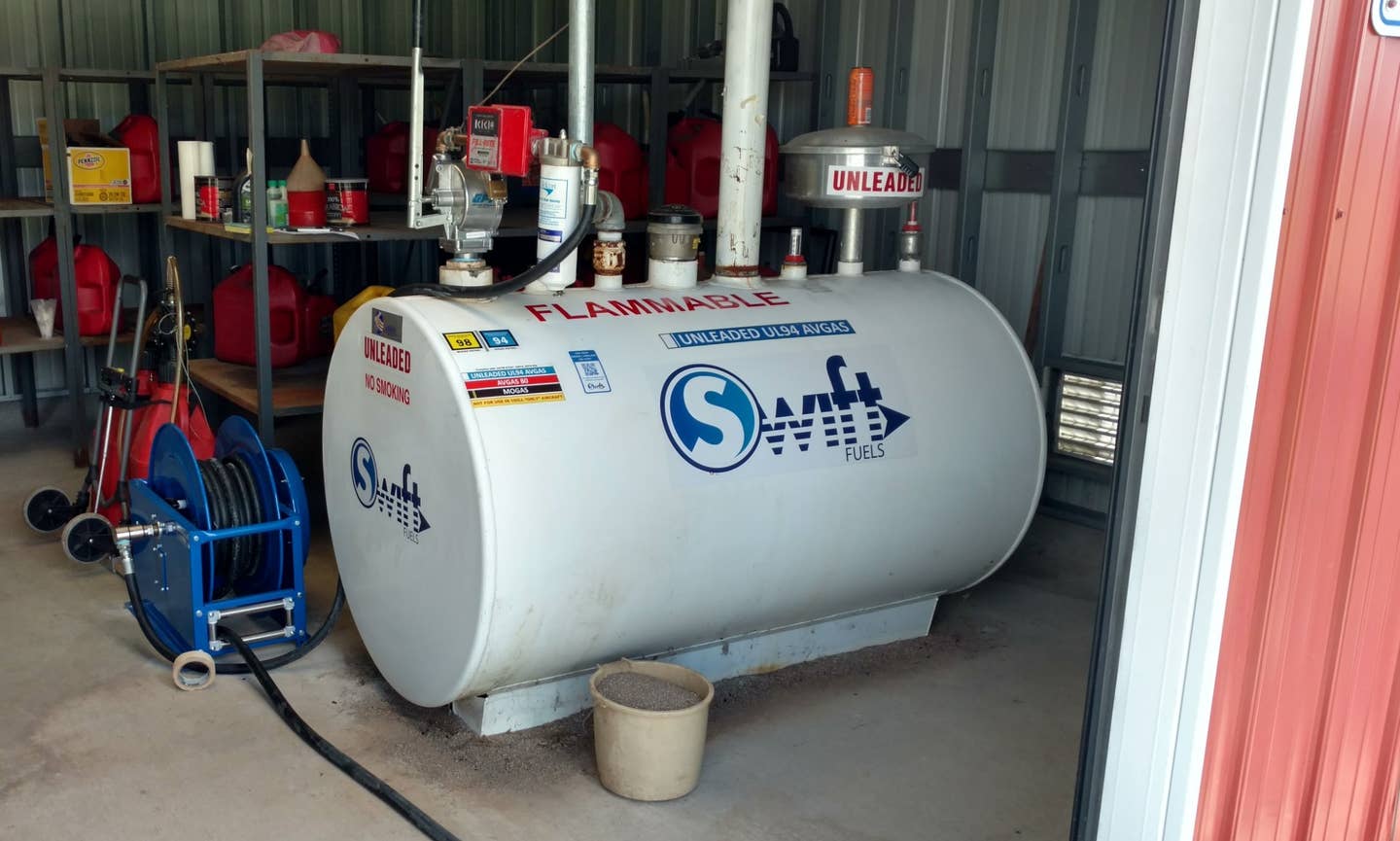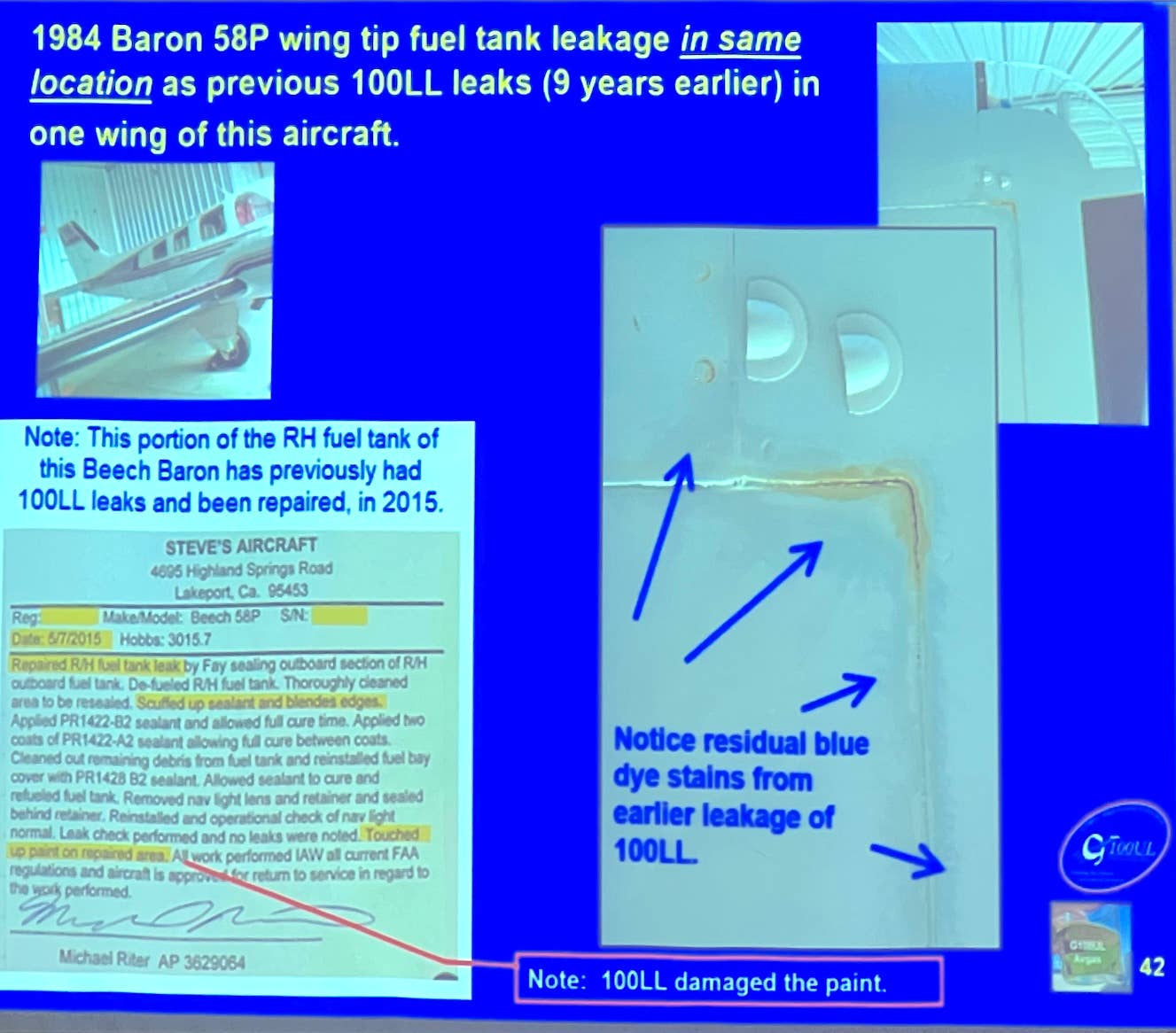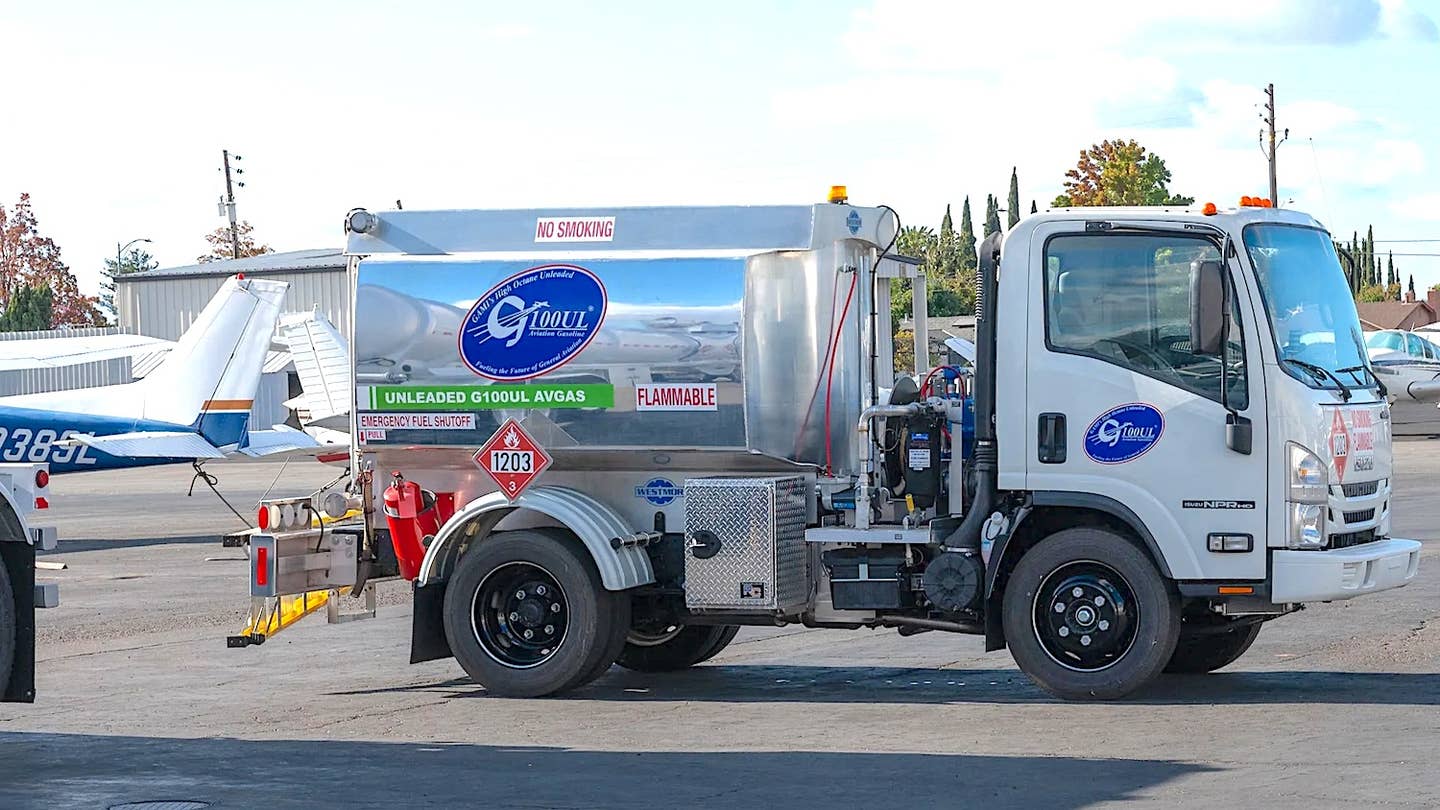Don’t Toss That Headset – Hand Me the Pliers
One of the better applications of microprocessor technology in general aviation has been the ANR (active noise reduction) headset. But early ANR headsets were pricey and many still are. Enter Headsets Inc. and their conversion kits for many major brands of passive (non-ANR) headsets. AVweb’s Contributing Editor Dave Higdon recently upgraded his David Clarks with the Headsets Inc. kit and found it to be an easy, worthwhile modification.
 Lookingback, we waited far longer than wise to decide to equip our heads with active-noise-reduction headsets; even with a significant amount of sound insulationinstalled in our classic Piper Comanche, the physical impact of segments lastingthree and four hours usually left us tired beyond necessity. Money - actuallythe shortage of it, as is usually our case - blocked us from buying most of thetime. Even when we possessed the funds, the Comanche usually imposed otherpriorities on our spending plans. And besides, we usually reasoned, our plane ismuch quieter than most; people always told us so after a ride. So using oxygenfor the last hour of long trips usually proved good enough to perk us back up.
Lookingback, we waited far longer than wise to decide to equip our heads with active-noise-reduction headsets; even with a significant amount of sound insulationinstalled in our classic Piper Comanche, the physical impact of segments lastingthree and four hours usually left us tired beyond necessity. Money - actuallythe shortage of it, as is usually our case - blocked us from buying most of thetime. Even when we possessed the funds, the Comanche usually imposed otherpriorities on our spending plans. And besides, we usually reasoned, our plane ismuch quieter than most; people always told us so after a ride. So using oxygenfor the last hour of long trips usually proved good enough to perk us back up.
But thanks to a ride-along with a friend this past April, my partner andbride, Annie, joined me at Sun 'n Fun with a newfound appreciation of the valueof ANR technology - even as it left her astounded at the costs. She came toLakeland with our friend Jeff flying in his PropJet DLX Mirage, the turbopropconversion of New Piper's pressurized single; Jeff uses first-generation BoseANR headsets. The flight down convinced Annie: We need to set aside the bucksand buy ANR.
 "Look," she told me, doing a little preaching to the choir,"you fly a couple of hundred hours a year; that's a lot of noise exposure.And anything that lets you hear ATC better and arrive fresher enhances safety.I'm always a pushover for safety enhancements," she said, as she has many,many other times.
"Look," she told me, doing a little preaching to the choir,"you fly a couple of hundred hours a year; that's a lot of noise exposure.And anything that lets you hear ATC better and arrive fresher enhances safety.I'm always a pushover for safety enhancements," she said, as she has many,many other times.
So, we shopped until we damned near dropped, prowling buildings A through Dat Sun 'n Fun in a quest to find the best value in ANR headsets. We stopped atevery manufacturer's booth and sampled every design, usually trying on thehost's brand and then competing models graciously supplied by each host for thepurposes of objective comparisons.
Even though some of our comparisons seemed unavoidably subjective, we learnedalong the way that price indeed influences quality. For example, one company'snew budget headsets - under $300 and advertised honestly as having lower noisereduction than its other models - did in fact work less effectively than thecompany's own $600 sets; throw in our discomfort wearing them, and even the lowprice seemed inadequate to induce our interest. We didn't decide that the $1,000Bose systems worked best - we found them better in ANR and worse in audioquality than Sennheiser's HMEC 300, which sell for about $600.
But we did find a strong middle ground in ANR headsets, priced between $300and $500, where the noise reduction and audio quality sounded very good for themoney. We closed in on spending close to $700 on two headsets then we found analternative that, in our experience, matched even sets priced up to $600 each.
That alternative brand: Our own two-decades-old DavidClarks converted with kits from Headsets Inc. Yes, we sampled them, as well, inthe same afternoon-long marathon sampling session at Sun 'n Fun. Thankfully, theHeadsets Inc. booth also offered demos with several competing brands availablefor comparisons - including several of those brands and models we previouslysampled and liked.
|
But between the show-special pricing and my satisfaction with the fit andcomfort of our Clarks, the idea of tackling a few hours of bench work clickedwith me instantly. Nothing like the prospect of saving about $400 to make meanxious to haul out the soldering iron. The David Clarks originally came to uswith our first airplane, tossed in by a young man who planned to do littleflying in the future; if I screwed them up or if we didn't like them, sellingthem for the cost of the Headsets Inc. kits would be relatively easy.
And then we'd buy new. Well, we've put more than 40 hours on our HeadsetsInc. David Clarks and my only regret is not making the change sooner. As you'llread in a moment, the conversion process was relatively easy - certainly nochallenge to anyone with even minor skills at soldering or reading instructions.Better still, the ANR is effective, the audio clearer and the fit exactly likethe David Clarks fit before the conversion.
So, to give away the plot a bit early, this project is worth doing if you'reflying any brand of passive headsets that will take the kits. For about $190 anda couple of hours of work per set, you can enjoy active noise reductioncomparable to several brands selling for two and three times the price. And youcan use the savings of $200 to $400 per head to enjoy a nice weekend flying tripusing your newly converted headsets and experience the reduction in fatigueyou'll feel upon arrival.
Is This A Conversion Or A Renewal?
From The Shells In, You Really Get New...
In essence, Headsets Inc. provides you with all-new hearing electronics - you can even replace the main jack cable - which means that, upon completion of the conversion, you essentially have all-new gear, with the exception of the earshells, seals, headband, microphone and volume control of your existing non-ANR headset. The kit includes new inserts to replace your existing speakers. Those inserts carry an integral microphone and two speakers, one for audio, the other for the ANR "white noise" that cancels background sound. These integrated units, one for each earshell, also sport the integrated circuit board and digital processor that "hears" the background noise and generates the opposing-wave sound that cancels the targeted frequencies.
To make the ANR modules work, the kit includes new foam sound insulation to go inside the earshells, several pieces of wire, a new cross-over cable, a length of resin-core solder, several small pieces of heat-shrink tubing to cover and insulate the wire connections, a battery box, and a set of instructions complete with color wiring diagrams. Finally, the standard kit includes a power cable meant for securing to the headset cord.
My attitude toward securing an external power lead to our old headset cables fell short of enthusiastic; our cables looked their ages and the jacks themselves showed signs of wear and tarnishing. Besides, the single lead already seems to tangle on every possible projection. So we opted for the new-cable option the company offers. For an additional $20, we received brand-new cords which consist of a new multi-conductor cable incorporating the power cord and connector, plus new mic and headphone jacks.
Since we long ago installed new gel earseals, mic muffs and headpads, completing the conversion basically overhauled our old units to zero time; sure, the shells and metal headbands remain the same, but otherwise everything in the hearing side of our headphones came away brand new. No, we didn't replace our noise-canceling mics; no biggie. From what we hear, they work great; in other words: ain't broke; ain't fixin' 'em.
...Test Twice, Snip Once; Test Twice, Solder Once...
As it worked out, installing the first Headsets Inc. ANR kit didn't really require a volt/Ohm meter - but it helped, going a long way toward confirming connections before soldering wires and connectors together. In essence, I needed only to follow the color-coded drawings and trust in my ability to identify wires and terminals and connectors. You need to stay attentive during disassembly every bit as much as you should when rewiring and installing the ANR modules. Cut a wire at the wrong spot and you'll be back with that multi-meter trying to troubleshoot a non-functioning headset.
Be sure of your selections, though, check twice and keep the process in order and you should find nothing daunting about the job.
In essence, you first remove each cup from its mount, gently pull off the earseals, remove the cloth covers tucked inside each cup, and remove each speaker. Most of the work centers on two mounting screws that hold the speakers firmly to the shell, and then disconnecting the wire leads from the speakers. You'll pull out some old insulation and find a bundle of wires behind each speaker, all of it color-coded. Following the instructions, you disconnect the crossover cable and route the new one.
At this point, you've cut the internal wiring in several places and a number of lose ends hang in front of you. No sweat; as long as you can trace the wires or check them with a volt/Ohm meter, you can identify each one.
In our case, we also cut and removed the old main cable, which included connections for the microphone; the new cable included its own instructions. So, by paying attention to the loose ends and the extra diagram, restoring all the right connections proved relatively simple. I merely traced the diagrams that came with the new cable when appropriate and referred to the master diagram when it was relevant.
...Doing It...
First, the new crossover cable went into place, followed by the new master cable. A hint is in order here: Put a little dish soap in a saucer and use Q-Tips or cotton swabs to lubricate the inside of the earcup grommets and the outer shell of the cables. Otherwise, these rubber-against-rubber passages become difficult to make. A little bit of Dawn detergent allowed the cables' outer shells to slip easily through the grommets.
|
Now, with the new cables in place, pair off the individual wires from the cables to the corresponding pieces of wire still inside the earcups - to the volume control, for example - and to the wires that will connect to the modules. Here's when a multi-meter makes things easy. Set the meter to test resistance and you can confirm each connection before proceeding to solder the connections.
Once the internal wires, cross-over cable connections and power lines are connected, it's time to connect the wires that link the modules to the headset's harness. You face three small wires and three tiny holes in the circuit boards, each one already surrounded with solder. One is a common ground, one carries power for the processor; the third carries the airplane's audio signal. Strip the wire ends about 3/16ths of an inch, slip them into the proper hole - the diagram covers it all - and touch the iron's tip to the wire. When the solder wicks onto the wire, you've made the connection.
...Buttoning Up
Closing the headsets basically involves tucking the wires behind the new insulation, test-fitting the modules, adjusting the wires' placement, making a final check for proper fit, mounting the new speaker modules in place and reassembling the headsets into one complete unit. Sounds simple but, in reality, this step requires as much patience as the cutting and soldering. You may need a couple of extra tries to get the wires sorted and tucked away; a bit of tape or a bit of glue can help here. But once you've got it arranged, it gets easy.
The modules don't actually go inside the cups in the same way the old speakers fit; in reality, you settle them in to fit against the flange that goes around your ear. Two pieces of very thin double-back tape hold the modules to the earcup flanges; re-mount the earseals and they hide the flange and the edges of the modules. Put the earcups back into the frames and you're ready to try 'em out.
Return To Service
Try Each Cup Before Final Installation...
|
Once the assembly process is complete, the next step is to test your handiwork. For this, you don't even need an airplane. Simply put a 9-volt battery in the power box, plug the power cable into the box, insert head into headsets and throw the power switch to "on." In about a second, you'll hear less - presuming your efforts worked as well as mine. The Headsets Inc. conversion surprised me in its effectiveness. The system worked well enough to mute the background noise around my house.
Test One, the ANR wiring: Success! No feedback, screeching or hissing; only muted background modulation. Which is as it should be.
The next day, with the airplane, I plugged in the jacks, started the engine, turned on the ANR, then a com radio and held my breath. Instantly, I heard the highly distorted audio of a Cherokee several miles out and inbound. After adjusting the radio and intercom volumes, I listened closely. The next call from the Cherokee was as clear as I've heard in any headset.
Test two, a functional test: complete and equally successful!
Finally, time came to key the mic and venture a transmission; no squeal or feedback on keying the mic ... and the Cherokee pilot answered my request for a radio check with a hearty, "Five-by-Five, 73 Papa."
Test three and another hit; a hat trick! Everything worked!
At least, sitting on the ground, engine at run-up rpm, talking to a guy only a couple of miles way, everything worked. No sweat. Our first road trip with the Headsets Inc. ANR conversion started within the hour. Now, we'd learn whether we spent wisely, investing about $360 to upgrade our David Clarks to ANR.
...Baptism Of Flight
Less than an hour after checking out both of our freshly converted David Clark headsets, Annie and I launched on one of our routine trips east to call on business associates and visit family. On this day, stormy weather along our route encouraged filing IFR, which meant sharing the airways with a lot of other pilots and controllers slightly stressed by the conditions. All the ingredients of summertime flying were present: towering cumulus, big storm cells scattered across 60,000 square miles of the Midwest U.S. and dozens of commercial, GA and military aviators competing for the attention and approval of ATC.
A better time to hear clearly and listen to others' calls never existed. But my satisfaction with our decision started before we left the ramp at our home base of Augusta Municipal Airport (3AU), a few miles east of Wichita. With a storm cell approaching from the southwest urging us on, we departed with our clearance in hand. And we got a last-second weather update from the ATIS at Wichita Mid-Continent Airport (ICT) while taxiing to Runway 36. Why this stands out is because usually the signal is too noisy and the modulation too weak to understand while on the ground at 3AU. Today, however, the voice came through clearly, albeit not cleanly or strongly, thanks to the quieter environment inside my headsets, the clearer audio and the lower volume settings on the radio.
The static and noise remained in the signal; but the clearer audio and lack of distortion from overdriving the headset speakers allowed the voice to stand out from the junk more clearly.
For the first 90 minutes of our flight to Jeffersonville, Ind., I found myself returning to the intercom and radio volumes again and again, each time nudging down the level a little more. By the time we crossed the Mississippi River a couple of hours later, the volume controls were down at the equivalent of 2.5 to 3 on a scale to 10, compared to 7.5 to 8 before the conversion. Radio calls from controllers talking over distant repeaters came through more clearly than they had on prior trips across this same route. In fact, it occasionally irritated me that people were talking in the background back at Kansas City Center; irritated me until it struck me that those voices never before came through on a center frequency. Clearly, the conversions allowed me to hear sound masked or muffled with the headsets in their original-equipment form.
Throughout the trip, which included some tense moments flying a localizer approach into Leesburg, Va., the audio seemed clearer, crisper - and at a lower volume that was much more comfortable to hear.
The Verdict?
So far, we've put more than 40 hours on our converted David Clarks and there has been only one difference from the manufacturer's promise: We're getting about 25 to 30 hours on a battery versus the 15 to 20 hours promised by Headsets Inc.'s literature. Why this is the case is anyone's guess. We believe the airplane's sound insulation makes the cabin so much quieter than average that there is less demand placed on the ANR circuitry to produce counter noise. In other words, the units have less work to do when cutting noise by 18 to 20 dB and don't consume as much power.
There is one thing I'd do differently, where I faced with doing this again - which I would, most assuredly. Just as we ordered the new main cable with its new jacks, I'd go ahead and order power modules to install in the airplane and save the boxes for use in other airplanes or in the event of a power problem. The permanent connections cost another $20, plus installation in your plane. I figure in my lifetime the savings in batteries will cover the costs.
There you have it. The path to truth, enlightenment and ANR capability comes in a kit from Headsets Inc. near Dallas. For me, spending a lot more on a pair of new headsets to get no more in ANR just didn't seem smart. Don't feel handy with a soldering iron and a set of well-written, color instructions? No problem: Send Headsets Inc. your existing units and an extra $50 and the company will do the work for you.
As it stands, you can order kits by phone, online or at most of the major events on the general-aviation calendar - Sun 'n Fun, EAA AirVenture Oshkosh, AOPA Expo, etc. We ordered at Sun 'n Fun and saved about $40, making our total investment less than $375, new cables and all. That's for two conversion kits - less than the price for one of the fancy new ANR headsets we liked best in comfort, fit and noise attenuation and barely half the price for one of the sets I really had my eye on buying.
Try it - you'll like it. So will your ears.
| Headsets Inc. is a long-time AVweb sponsor. However, the author neither sought nor received any consideration from Headsets Inc. in choosing the company's conversion kit. This article was conceived both after purchasing the kits and without any assistance from Headsets Inc.
To learn more about the Headsets Inc. line of conversion kits for your passive headsets and to order, be sure to visit the company's Web site. |













